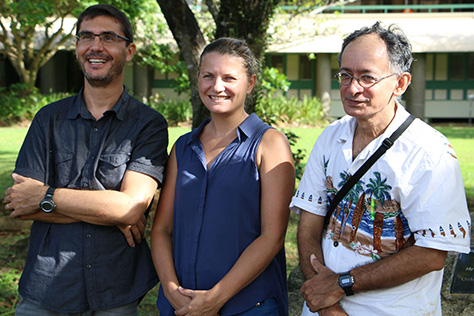AsiaPacificReport.nz
[embedded content]
TJ Aumua’s video report “Scientists take on Pacific crown of thorns starfish threat”.
By TJ Aumua in Suva
The crown-of-thorns phenomenon may sound like something from a Hollywood movie storyline. Instead it’s the name given to the rapid mass reproduction of the crown of thorns (COT) starfish – the biggest threat to the Pacific’s coral reefs.
Named for its long poisonous spines on its exterior, the starfish are the primary cause for the extinction of live coral in the South Pacific.
 Dr Pascal Dumas, a researcher at the Institute for Regional Development (IRD), has been working on the phenomenon in the Pacific for almost a decade.
Dr Pascal Dumas, a researcher at the Institute for Regional Development (IRD), has been working on the phenomenon in the Pacific for almost a decade.
Although this has always been a natural marine cycle for the starfish, climate change such as warming sea temperatures and nutrient run off from floods and drains into the sea are possible factors for the starfish’s population explosion.
Standing on or being scratched by a COT spine can cause serious illness and infection.
This makes fishing for those who live on the Pacific coastlines a dangerous chore.
Dumas, together with IRD colleague and information technology engineer, Sylvie Fiat, developed OREANET, an online COT monitoring system.

This was previously launched in Vanuatu and New Caledonia to keep track of where COT clusters were present or growing around the coast.The project is planned to begin in Fiji this year.
OREANET relies on “citizen science” by encouraging locals to report on COT observations and submitting this via an online form.
Those involved in ORENET will be working with community leaders and NGO’s to help rural communities gain access to the project.
- The University of South Pacific’s Pacific Centre for Environment & Sustainable Development (PaCE-SD) is hosting a weekly seminar for students during their semester. This week, they invited Dr Pascal Dumas and Sylvie Fiat from Vanuatu to inform the students about their project.
Ami Dhabuwala and Pacific Media Watch contributing editor TJ Aumua are in Fiji on a two-week “Bearing Witness” climate change journalism project with the University of the South Pacific.
–]]>







